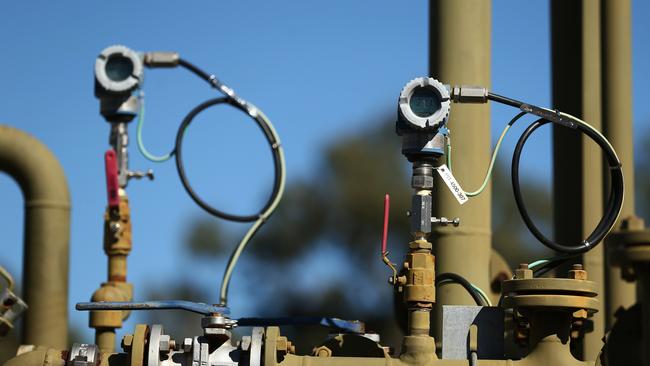Santos warns of potential PRRT tax hit
Oil and gas group Santos says it faces a potential hit to earnings from looming tax changes.

Oil and gas producer Santos has warned of a potential hit to its earnings as a result of looming changes to the structure of the petroleum resource rent tax.
The Adelaide-headquartered producer used its quarterly production report issued on Wednesday to warn that its bottom line could be affected by the changes, which formally passed through parliament earlier this month.
Santos has long shaped as the locally listed oil and gas play most exposed to the changes, which will close a loophole that allowed companies to use their investments in onshore oil and gas assets to offset the tax liabilities of their higher margin offshore businesses.
Santos, along with multinationals including Royal Dutch Shell and ConocoPhillips, appear most exposed given their extensive interests in both onshore and offshore gas projects.
“The new laws eliminate the ability to transfer onshore exploration costs from July 1, 2019, and also retrospectively eliminate the tax value of the past onshore investment,” Santos said on Wednesday.
“Santos will assess any impact of the new laws as part of the preparation of its financial results for the half-year ended June 2019 to be released in August.”
The caution around the tax liability came as the company handed down its first full set of quarterly production figures since completing its $US2.15 billion acquisition of Quadrant Energy in November last year.
Santos’ output for the quarter of 18.4 million barrels of oil equivalent was up 33 per cent from a year ago, while the $1.01 billion in sales revenue was up 28 per cent and represented the second-highest quarterly revenue by the company on record.
The company also announced record quarterly free cash flow for the quarter of $327 million.
The figures would have been even stronger were it not for the impact of Tropical Cyclone Veronica on its West Australian assets last month, as well as facility outages at its Cooper Basin operations.
The first full quarterly contribution from the Quadrant acquisition also showed the shift in weight within Santos towards WA.
Its assets in the state produced 7.2 million barrels of oil equivalent, almost twice the output of the company’s next biggest production centre. WA was Santos’s third-biggest production centre a year ago.
The Quadrant deal has delivered in other ways too, with Santos earlier this week announcing the discovery of a “significant gas resource” at the Corvus prospect it picked up through the acquisition.
The Corvus-2 appraisal well result announced this week intersected a gross gas interval of 638m. Santos described it as “one of the largest ever columns on the North West Shelf”.
Santos also announced it had started drilling pilot wells for its carbon capture, utilisation and storage project in Cooper Basin.
The project aims to capture and reinject carbon dioxide “to deliver a step-change reduction in emissions and at the same time drive increased oil recovery and sales”.
Carbon capture and storage has a mixed record in Australia’s oil and gas industry.
Plans by US oil giant Chevron for a big carbon sequestration project at its Gorgon LNG plant in WA have been blighted by persistent technical issues and is well behind schedule.
RBC Capital Markets analyst Ben Wilson said Santos was “tracking more or less in line with our expectations to start the year”.
“We see Santos’ diverse and brownfield-focused growth pipeline as a differentiator versus peers,” Mr Wilson said.
Shares in Santos closed 4c higher at $7.11.


